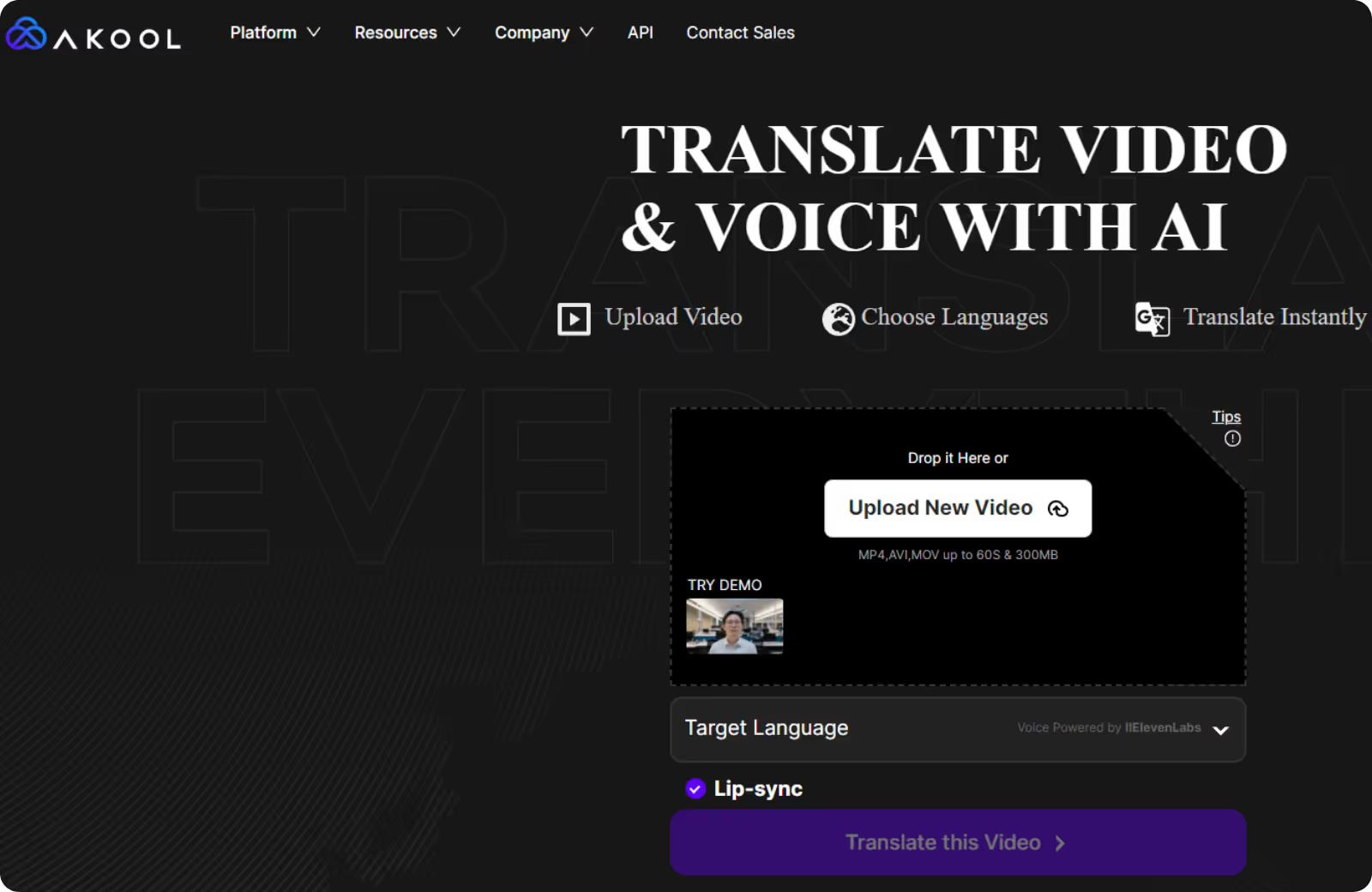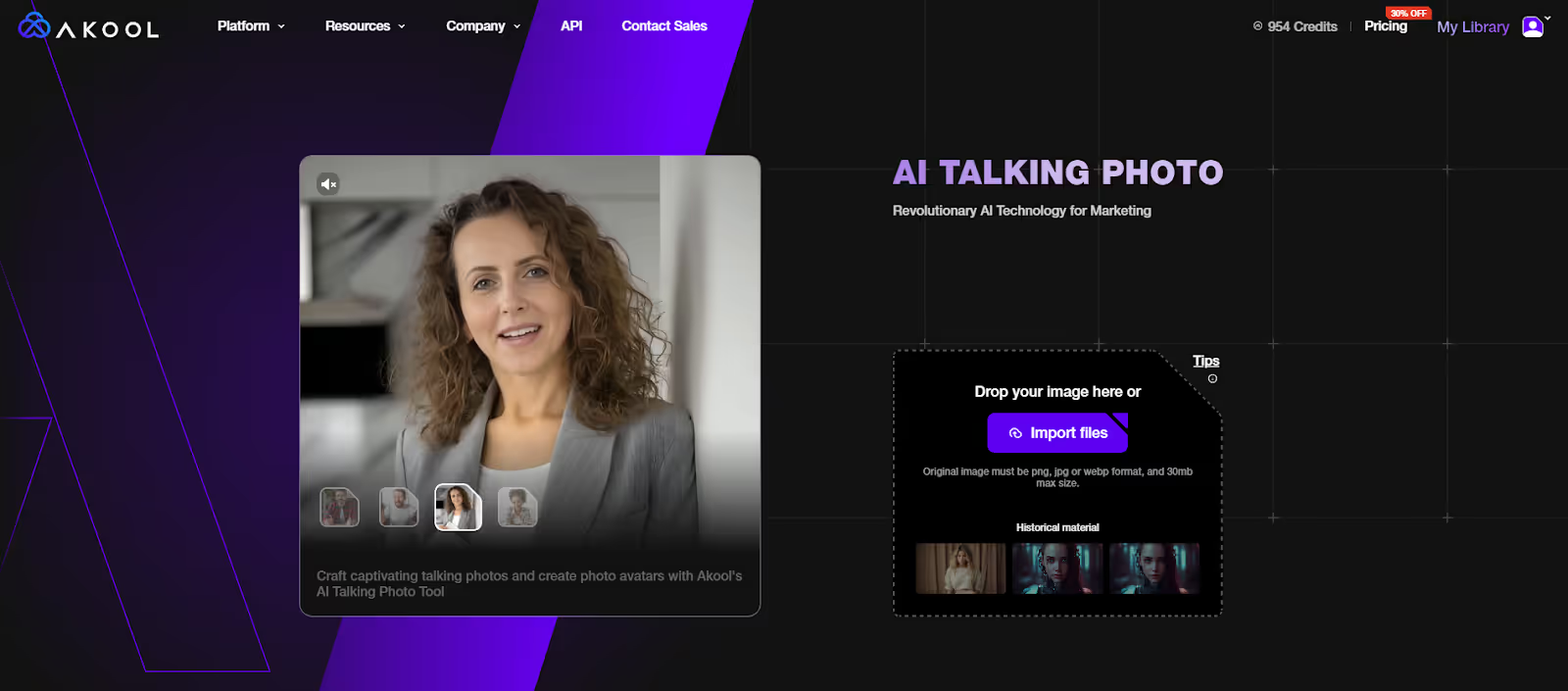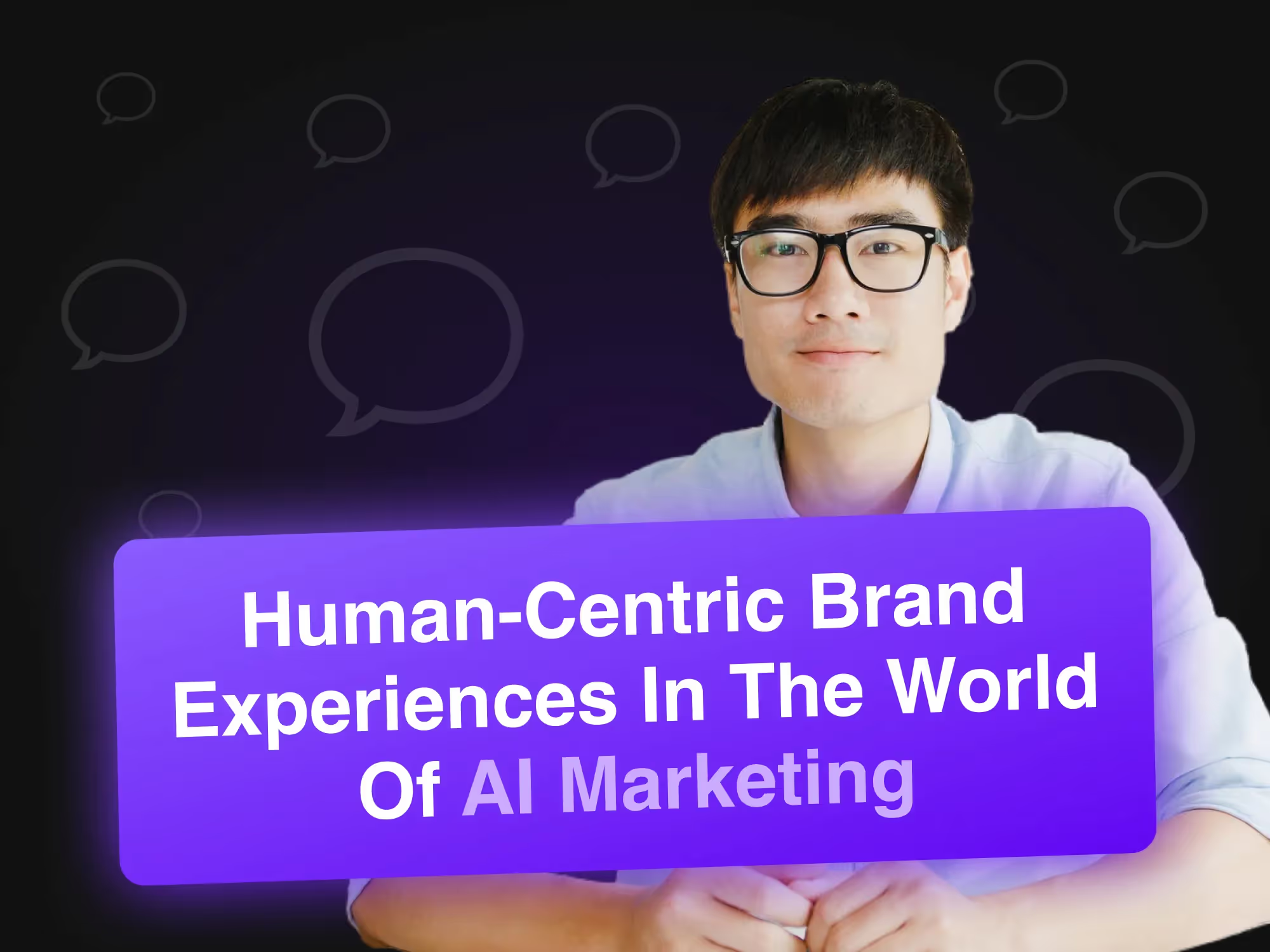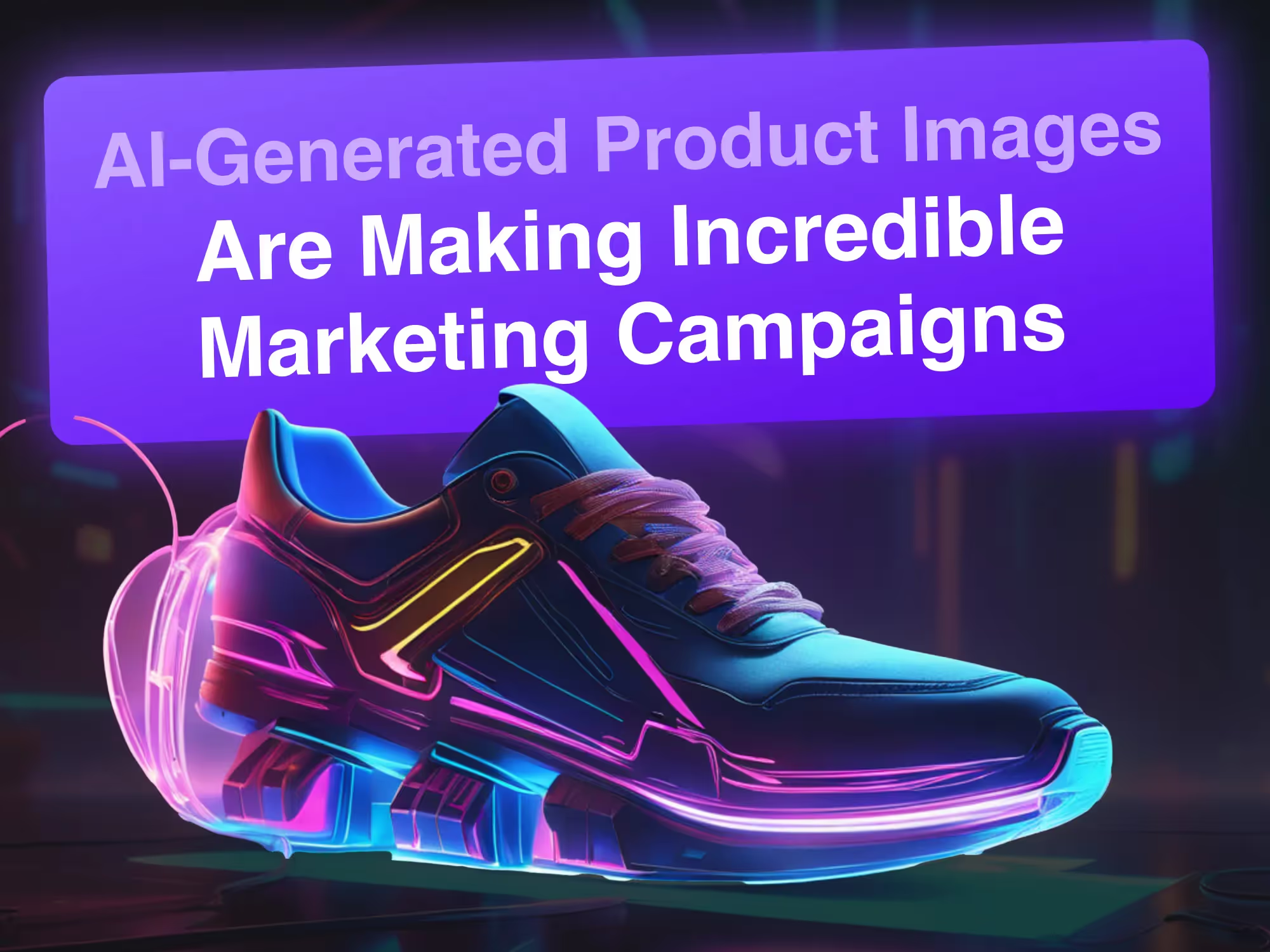No matter which brand you encounter social media—chances are, they are pumping out content faster than ever.
However, this can lead to monotonous feeds that are lackluster and get lost in the sea of reels and videos.
Consumers get bombarded with thousands of ads and videos a day; your company can't stand out unless you provide personalized, human-centric brand experiences.
The power of human connections to drive action and change has always been recognized by great artists, storytellers, and designers.
And now, marketers are catching up. They are transforming into experience makers who no longer just sell products, but offer something to buy into.
They understand that the human experience is far more powerful than any marketing or advertising. The world's leading brands prioritize purpose over product and strive to infuse humanity into every interaction they design.
Now, with AI taking the world by storm, how can companies create human-centric brand experiences?
Below, you'll discover how to harness AI and leverage software such as AKOOL to transform traditional strategies into engaging human-centric brand experiences.
Understanding AI-Powered Brand Experiences

AI-powered brand experiences use advanced technologies to transform and streamline how businesses craft personalized interactions and narratives for their customers.
By integrating tools that automate and enhance video, photo, and textual content creation, AI enables marketers to deliver highly tailored and engaging experiences effortlessly.
Here’s how AI is shaping the landscape of brand engagement.
Streamlining Content Creation with AI
AI tools, such as AKOOL's Realistic Avatar and Talking Photos, are revolutionizing content production, providing brands with the capabilities to generate high-quality visual and textual content quickly and efficiently:
- Automated Video Production: AI-driven platforms can automatically edit, stitch, and render video content, significantly reducing the time and technical expertise required to produce professional-grade videos.
This allows brands to rapidly deploy engaging video content that is customized to individual viewer preferences or behaviors, making every interaction unique and personal. - Enhanced Photo Editing: AI technologies can enhance photographs automatically, applying filters, adjusting lighting, and even altering backgrounds without manual intervention. These enhancements can be tailored to fit the brand’s aesthetic.
This makes visual content both eye-catching and consistent with the company’s identity. - Dynamic Content Customization: AI excels in adapting content in real-time to suit different contexts or audiences. For instance, AI can modify the language, tone, and style of textual content on websites or in email marketing campaigns based on the user’s previous interactions with the brand, enhancing relevance and engagement.
Maintain Brand Consistency
While personalization is important, maintaining brand consistency across all digital touchpoints is equally important. AI can help to make sure that every piece of content, whether a video, image, or text, aligns perfectly with the brand’s core values and visual identity.
Now, when brand elements or messaging need to be updated—perhaps due to a rebranding initiative or a shift in marketing strategy—AI can quickly and efficiently roll out changes across all platforms and content types.
Consequently, companies can rest assured their content will remain consistent and reduce manual workloads.
Challenges in Creating Human-Centric Brand Experiences
Integrating AI into brand experiences offers transformative potential but navigating the intersection of technology and genuine human connection poses significant challenges:
Balancing Automation with Human Touch
The primary challenge lies in maintaining a genuine human touch amidst increasing automation. While AI can efficiently handle data and personalize interactions, it lacks the innate empathy and understanding that human interactions inherently possess.
Brands must strive to implement AI in ways that complement rather than replace the nuances of human engagement.
Addressing Consumer Expectations
Consumers today expect highly personalized interactions, but their preferences on how much automation versus human interaction they desire can vary widely. Tailoring AI to suit these diverse expectations requires a deep understanding of target demographics and continuous adaptation of strategies to meet these evolving demands.
Keeping Pace with AI Evolution
AI is advancing at rapid rates and keeping up can be daunting for any organization. Marketers need to stay informed about the latest developments and be agile enough to implement changes that can significantly affect their strategies.
This constant need to adapt can strain resources and complicate strategic planning, especially for businesses without extensive technical expertise.
The Role of Human-Centricity in AI Branding
Human-centricity should be the foundation of AI branding strategies. After all, you're trying to market to people, not machines.
It's of the utmost importance for companies to make sure that when they use AI tools, they're able to enhance the customer experience in a thoughtful and meaningful way.
Here's how companies can put humans first when crafting AI brand experiences:
- Incorporating Human Oversight: Essential for maintaining AI quality and integrity, involving continuous adjustments based on real human feedback and ethical considerations.
- Prioritizing Consumer Emotions and Needs: Understand and address the emotional and practical needs of the target audience to enhance AI effectiveness in branding.
- Cultural Understanding and Adaptation: Make sure the AI brand experiences are culturally sensitive, recognizing and adapting to the diverse values, norms, and consumer behavior nuances across different cultural backgrounds.
Harnessing AI for Personalization
When it comes to creating AI brand experiences, AKOOL stands apart from the pack. With three different tools you can use, you can quickly come up with brand new angles to market your products and services.
Video Translator

AKOOL’s Video Translator tool redefines how brands approach global markets. Imagine launching a campaign where your brand's message is delivered seamlessly in the native languages of diverse audiences without losing the emotional resonance or unique tone of your brand.
This tool automates the translation process, maintaining message consistency and enhancing local relevance, which is crucial for building trust and connection in different cultural contexts.
- Use Case: Launch a product tutorial video that automatically customizes its language to match the viewer's preference, ensuring clarity and increasing engagement across various regions.
Realistic Avatar

Bring a personalized touch to your digital interactions with AKOOL's Realistic Avatar. This tool enables the creation of virtual brand ambassadors or customer service representatives who deliver tailored messages.
These avatars can mimic human nuances in communication, making digital interactions feel more personal and engaging, which is essential for building long-term customer relationships.
- Use Case: Deploy a virtual brand ambassador in online customer service chats who greets customers by name and changes communication style based on the customer’s tone and feedback, enhancing the customer support experience.
Talking Photo

Transform static images into dynamic marketing assets with AKOOL’s Talking Photo. This innovative tool animates still photos, allowing them to interact with viewers through spoken dialogue.
By turning ordinary images into engaging narratives, brands can capture attention more effectively and create memorable experiences that resonate emotionally with their audience.
- Use Case: Animate historical figures or brand mascots in promotional materials to tell the story of your brand’s heritage or values in an engaging, narrative-driven format, making your brand’s backstory captivating and accessible.
Best Practices for Implementing AI in Branding
Integrating AI into your branding strategy can significantly enhance how you connect with customers, but you can't forget the human beings who’ll be consuming your content.
Here are a few practical tips and strategies to effectively incorporate AI technologies into your brand marketing efforts:
Define Clear Objectives: Before integrating AI, clearly define what you hope to achieve. Whether it's improving customer engagement, personalizing communications, or streamlining content creation, clear goals will guide the deployment of AI technologies.
Align AI with Brand Values: Make sure that the AI technologies you deploy resonate with your brand’s core values and message. This alignment helps maintain the authenticity of your brand voice across all AI-driven interactions.
Choose the Right Tools: Invest in AI tools that best meet the specific needs of your marketing strategy. Tools like AKOOL’s Video Translator, Talking Avatar, and Talking Photo can provide distinct advantages depending on your goals, such as reaching international audiences or creating engaging digital content.
Integrate with Existing Systems: When it comes to selecting AI tools for your marketing operations, it's essential to choose solutions that can seamlessly integrate with your existing platforms and CRM systems. This way, you can optimize workflows and maintain consistency throughout your organization.
Customize Consumer Interactions: Use AI to tailor interactions based on individual customer data. Personalized recommendations, content, and offers can significantly enhance the customer experience and foster loyalty.
Dynamic Content Creation: Employ AI-driven tools like AKOOL’s Talking Photo to create dynamic and personalized content that responds to user interactions in real-time.
Maintain Human Oversight: Regularly review the performance of implementations to make sure they are meeting the desired objectives and not deviating from your brand’s ethical guidelines.
Human Touchpoints: Despite the efficiency of AI, make sure there are opportunities for human interactions within the customer journey, especially in complex service scenarios or sensitive issues.
Continual Learning and Adaptation: AI technology evolves rapidly. Keep abreast of the latest developments and continually adapt your strategies to leverage new capabilities and insights.Feedback Mechanisms: Implement feedback loops with customers and internal teams to learn from AI interactions and refine them over time.
Real-World Examples of AI Brand Experiences
Of course, you're probably wondering if creating AI brand experiences would even work for your company. Well, here's a look at some AI brand experience campaigns that stood out and gained traction.
Heinz and AI-Driven Creative Exploration
Heinz cleverly harnessed AI's capabilities in a campaign that leveraged AI-generated images to see how a machine would visualize "ketchup". Using the text-to-image AI platform Dall-E 2, Heinz created a variety of ketchup images, which humorously reinforced the brand's market dominance by concluding that even AI “prefers” Heinz.
This innovative use of AI not only engaged customers but also strengthened Heinz's brand identity as the leading choice in the market, showing a playful side of the brand while utilizing cutting-edge technology.
Coca-Cola’s Create Real Magic Initiative
Coca-Cola introduced an engaging AI-driven platform called Create Real Magic, which invites fans to craft their own AI-powered artwork. Participants can see their designs potentially featured in Coca-Cola's official advertising campaigns.
This initiative taps into the creative energies of Coca-Cola’s audience, allowing them to interact with the brand on a deeply personal level. By leveraging AI in this way, Coca-Cola enhances user engagement and fosters a strong emotional connection with the brand, making consumers feel like active contributors to the brand's creative process.

Coca-Cola, in collaboration with AKOOL, leveraged cutting-edge video asset swap technology to create an engaging interactive experience for its fans.
Utilizing AKOOL's expertise, Coca-Cola introduced a dynamic feature where players could take selfies and transform them into customizable in-game avatars for the popular game League of Legends.
This initiative, particularly popular in the US and Asian markets, allowed users to see themselves as part of the game, enhancing personal engagement and deepening the user's connection to the Coca-Cola brand through a novel, personalized gaming experience.
These examples illustrate how AI can be strategically used to enhance brand experiences by making them more interactive, personalized, and engaging.
By integrating AI in ways that prioritize customer engagement and brand values, companies can create meaningful connections that resonate well with their target audiences.
Using AI to Create Human-Centric Brand Experiences
AI provides a powerful tool for brands to create personalized, human-centric experiences that can deepen engagement and drive positive business outcomes.
By streamlining content creation, increasing personalization, and ensuring brand consistency, AI can help brands stand out in a crowded digital landscape.
However, it is equally important to balance automation with human touch and address varied consumer expectations to create a truly human-centric experience.
Ultimately, the future of AI branding lies in finding the right balance between technology and humanity to create truly authentic and engaging experiences.
Ready to Create Your AI Brand Experiences?
From transforming simple photos into engaging talking avatars to localizing video content for global markets, AKOOL empowers you to create deeply personalized and engaging brand experiences.
Discover the power of AI today, with AKOOL's innovative tools! See the "Contact Sales" button at the top of this page? HIT IT!








